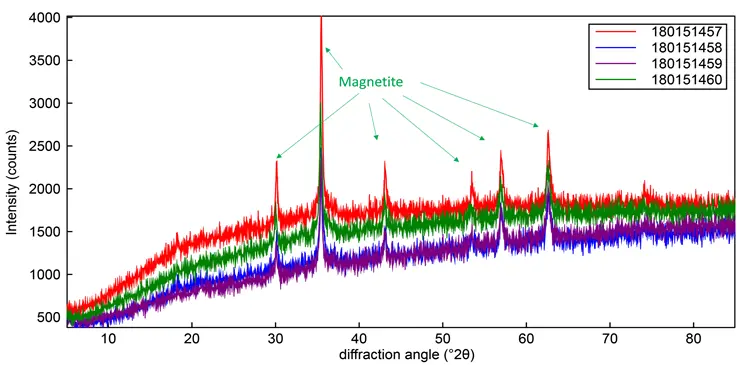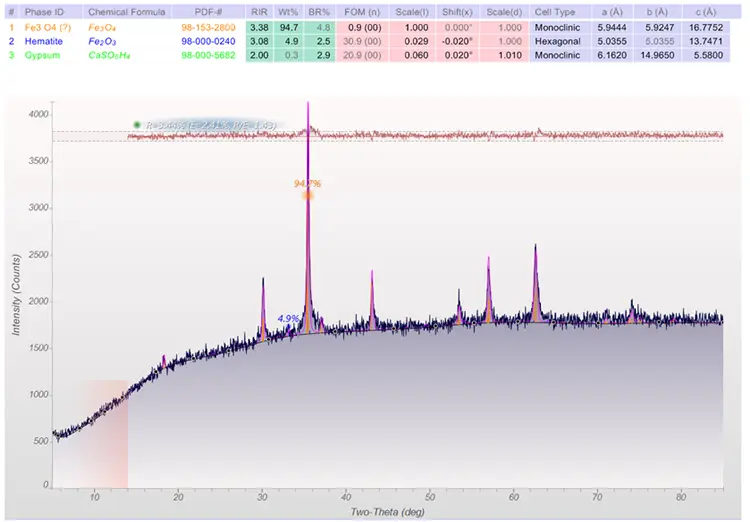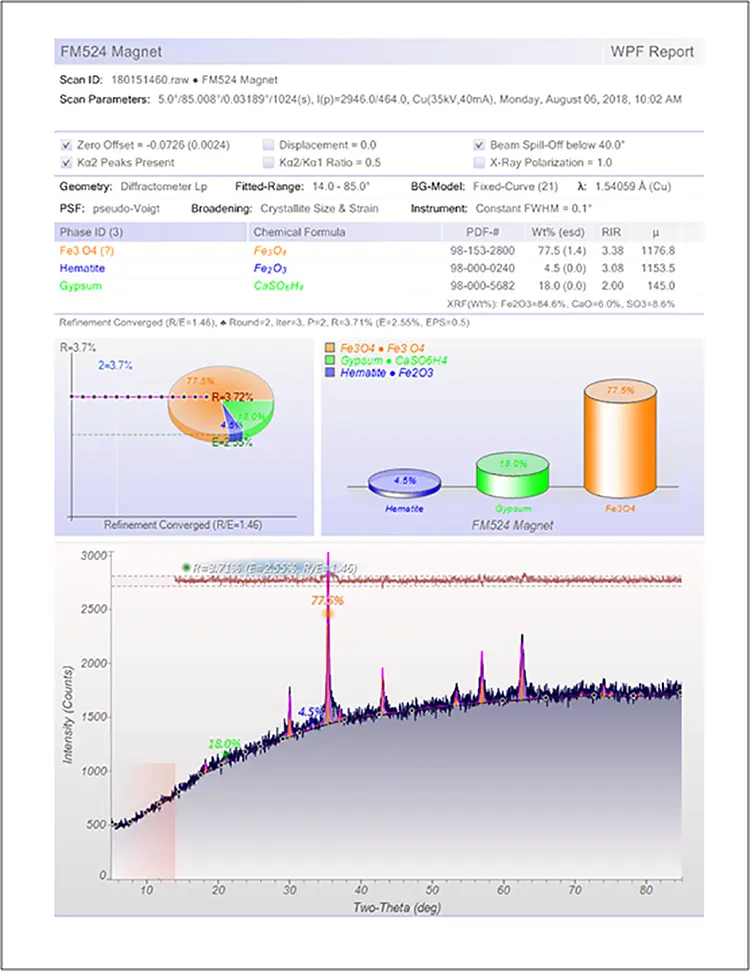Geo, Petro, and Agro Chemical Analysis
Geochemical Analysis
The type of geochemical work we routinely conduct at Triclinic labs is mineral content identification and quantification using X-ray powder diffraction (XRPD) and IR/Raman spectroscopy.
To perform these analyses, we usually require minimal (at least 100mg) of powder material.
To perform the identification and quantification, we pass the measured data through a series of reference databases that have close to 1 million known materials.
If the mineral forms have unique diffraction patterns or spectra, we can usually identify them.
To supplement the structural analysis of mineral content, we will also perform elemental analysis looking at the X-ray fluorescence.
Petro Chemical Analysis
Today, a wide variety of sectors, industries and applications that process liquids use pigging (more accurately described as ‘Liquid Product Recovery’) to reclaim liquids from pipelines and tubing, reduce waste and improve the efficiency of their manufacturing and production processes.
If you drink wine, beer, spirits, fruit juices, cola or other types of soft drinks, if you eat chocolate, sweets, candy, yogurt, soup, honey, sauces, ready meals or dips, or if you use paint, varnish, shampoo, shaving gel, cosmetics, toothpaste, liquid detergent or other household products, and if you put gasoline or oil in your car, then the chances are you’ve consumed or used something that’s been “pigged" during product processing or production.
Oil pipeline corrosion can produce large quantities of solid corrosion products that appear during maintenance pigging and during analysis of corrosion samples. Proper analysis of these solids can provide clues about the corrosion mechanism and the source of the corrosion.
- Inter-diffusion between the materials.
- Identify higher temperature mixtures
- Determine change in lattice parameters, size/strain variation, solid solution behavior and any new phase formation
- Phase Identification

Mini Case Study
Analysis of unknown pigging samples.
- Four XRD data sets collected on pigging samples submitted from pipeline collection.
-
XRF elemental analysis results show iron and sulfur as major components.
Lower amounts of calcium and silicon are present along with many trace elements. - Samples were mixed with mineral oil to control any airborne radioactive dust.
- Visual inspection of the measured XRPD data (Figure 1) indicates high iron fluorescence.
- Phase identification using Jade2010 (Figure 2)
- Refinement (Figure 3)

Figure 1. XRPD analysis of four pigging samples

Figure 2. Phase Identification of samples using Jade and reference databases. Magnetite (94.7%) and Hematite (4.9%) were identified as the major components.
Additional refinement was critical to accurate phase identification process and proceeded in an iterative step wise fashion (Figure 3):

Figure 3. Further refinement for accurate phase analysis. Magnetite (77.5%), Hematite (4.5%) and Gypsum (18.0%)
- A self consistent set of reference phases were selected utilizing all data sets in this study.
- Initial phase identification returned Magnetite.
- Single line searches and visual inspection identified Hematite and potentially gypsum.
- Peak widths were adjusted by manually changing crystal size parameters for all phases.
Agrochemical Screening, Selection, and Development.
Knowledge about the solid forms of fertilization, fungicide, herbicide or insecticide active ingredients is
essential for:
- Formulation Development
- Production (Identification of the most stable, crystalline form for manufacturing)
- Formulated concentration
- Compatibility with water
- Application approach (e.g. solid, liquid, oil) in the fields
- Storage and Stability
- Intellectual Property
Physical Stability of Agro Formulations.
The majority of agrochemical formulations include more than one active ingredient. Interactions, excipient compatibility, and other studies are important to determine stability, desired properties, and shelf life. We can determine
- Dissolution profiles
- Re-crystallization conditions
- Phase transformation
- Shelf life and long-term stability